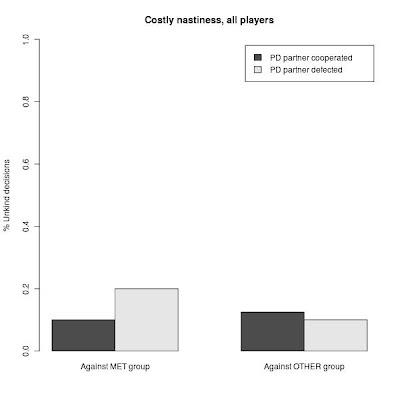Subjects were divided into three groups. Each played a prisoner's dilemma against another subject from a different group (the "prisoner's dilemma partner" or "PD partner"). Then, each of them made a set of allocations between themselves and other subjects - who were identified by group and player number, but who were not the same as their PD partner.
We call the group of each subject's prisoner's dilemma partner the MET group; the third group is the OTHER group.
When the PD partner defected, subjects made more allocations that harmed the other player. This difference was larger when making allocations against others from the MET group:
The effect is clearer for subjects who had themselves cooperated in the prisoner's dilemma:
For some decisions, being nasty to the other player actually cost the subject money. Not surprisingly there were fewer of those allocations, but the same pattern is observed:
and again the pattern is even stronger for PD cooperators.
Of course this is just the pilot, and I haven't yet done any rigorous statistical significance tests.




No comments:
Post a Comment